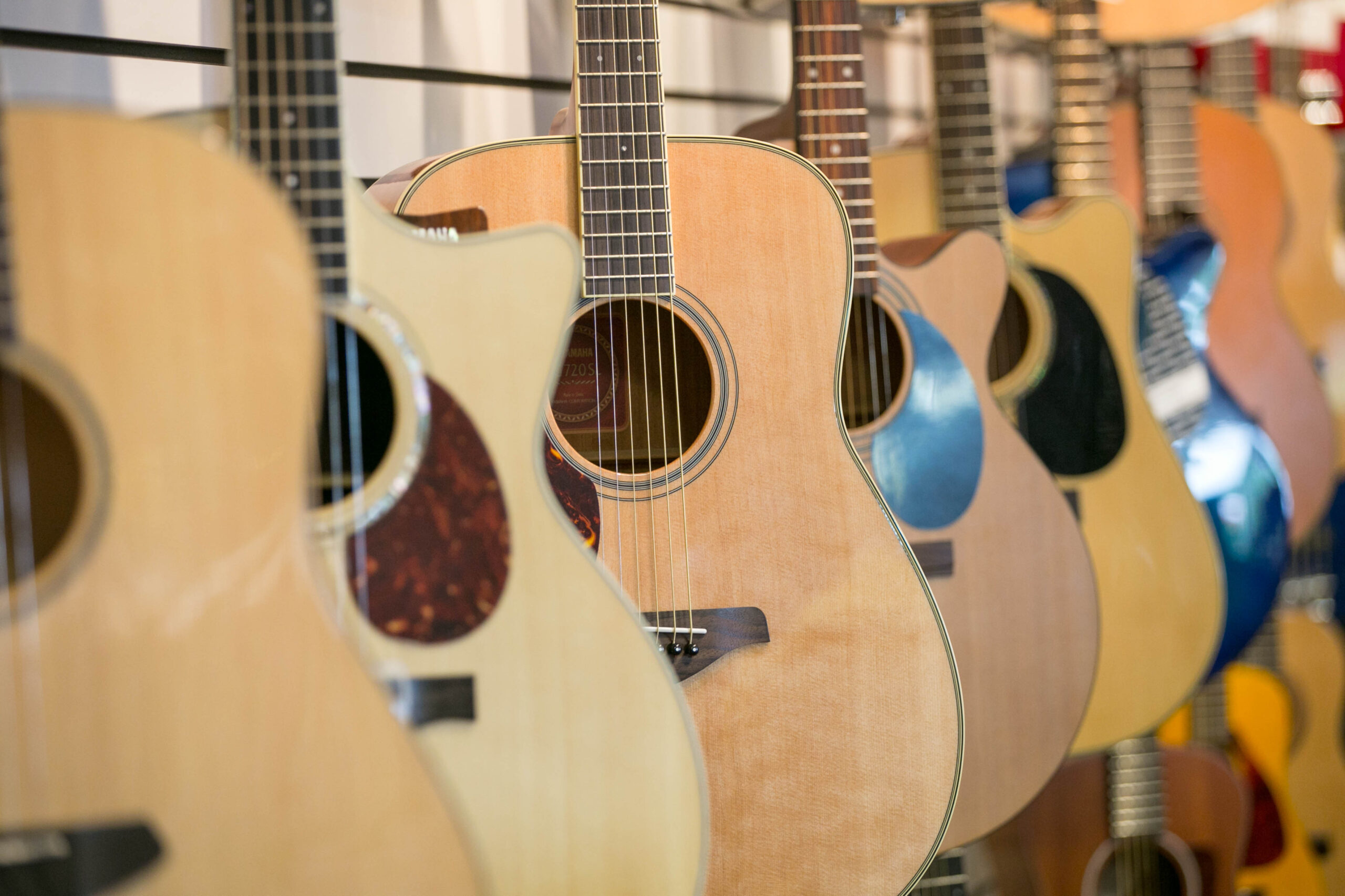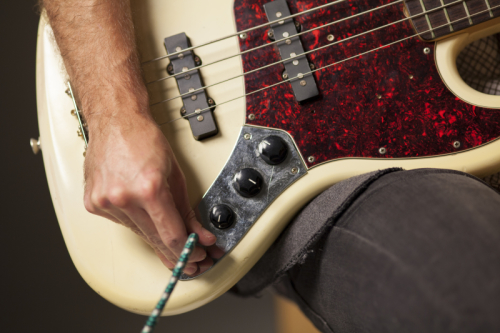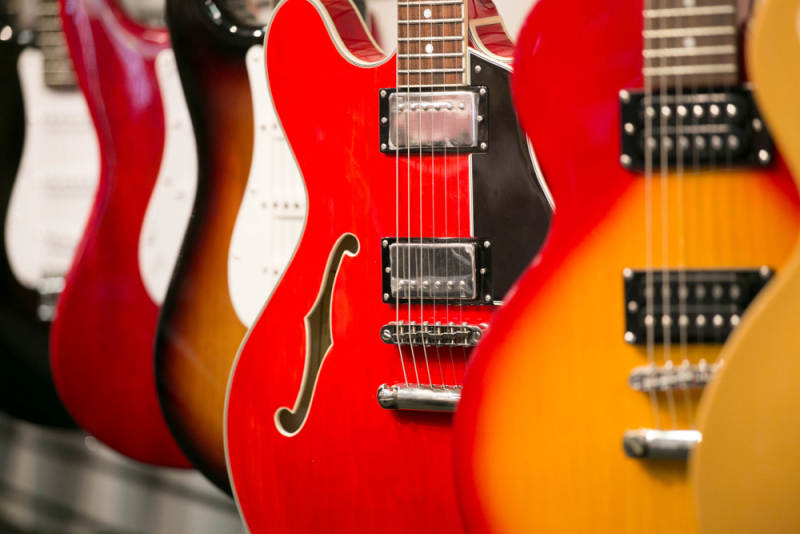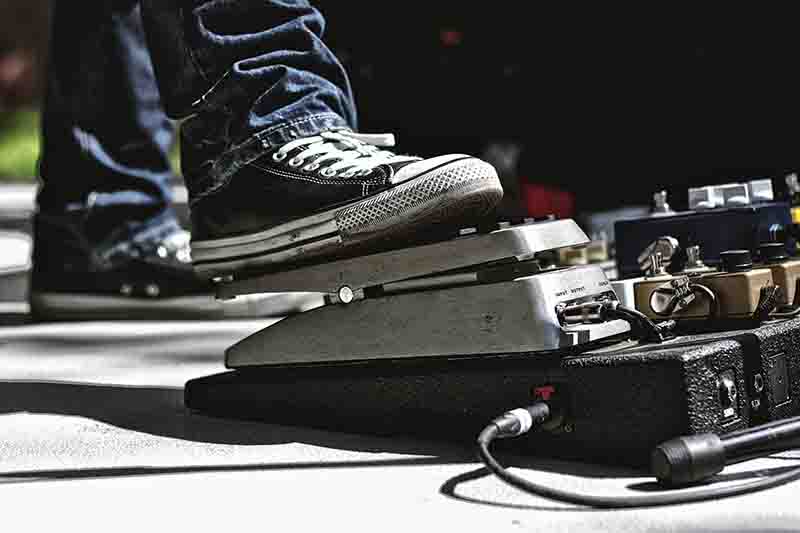April 09, 2015
12 & 14 Fret Guitars: Which is Right For You?
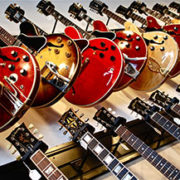

What Does it all Mean?
Twelve and 14 fret guitars refer to the place where the neck and the guitar body come together. Twelve fret guitars meet at the 12th fret. Fourteen fret guitars meet at the 14th. What’s a fret you ask? A fret is that raised part on the neck of a stringed instrument. A fret normally extends the entire width of the instrument’s neck, dividing the neck into segmented intervals. A 12 fret guitar would be shorter than a 14 fret guitar, which cuts off two more frets. The 12-fret has 18 total frets versus the 14-fret’s 20 (or 19).
Background
The 12-fret history goes all the way back to the early days of the steel-string guitar. Once the banjo and mandolin’s popularity began to rise, the 14-fret slowly replaced the 12. This happened around the 1930s when longer necks were more in style. Afterward, many considered the 12 fret guitar to be an old-fashioned classic. Twelve-frets used to be the standard! But that was the old days… Nowadays that couldn’t be further from the case. Although, many players have come to rediscover the 12 fret guitar’s unique qualities.
Feel and Sound
There’s only a difference of two frets between these guitars, but when it comes to the feel and sound, you’ll sense the difference between the instruments immediately. The difference in sound occurs because the 14 fret guitar’s location of the neck is farther away from the sound hole. The 12 fret guitar’s bridge position is closer. Smaller bodies are given more sustain since the bridge is situated closer to the low bout.
The bridge on a 12-fret is positioned at a more flexible place on top, also giving a smaller person more comfortability. Therefore, when it comes to sound (and depending on the model of the guitar), this normally results in a warmer and fuller tone. It might not get the highs in the same way or hit the lows as you would expect, but the sound will often be much softer and warmer. The 14 fret guitar, on the other hand, will surely attack the highs in the way you have come to expect.
When it comes to feel, some guitarists feel that the 12-fret has a looser, freer, smoother kind of touch to it. The size makes it more flexible. However, for someone who’s used to playing on the 14 fret guitar, you could easily feel restricted and cramped by the 12, especially if you are a bigger person with a larger body frame. Imagine trying to play the seventh or eighth fret with a longer arm, you might find your elbow in an awkward position.
Who would use the 12 fret guitar?
The 12-fret is older? Who would use it? A bunch of people! Beginners to advanced guitarists can enjoy the 12-fret all the same. There isn’t as much tension, making the smaller fret spacing easier to form chords. The fretting hand may not be as tense as it usually is playing the 14 fret guitar. This also means that finger stylists could have a field day on this one. A smaller person may find the 12 fret guitar more comfortable, solely based on size. Lastly, you get to be the cool guy or girl with the old-school 12-fret as opposed to the 14.
Who would use the 14 fret guitar?
You’ve most likely been using the 14 fret guitar. If you’ve been having a good time, why change things? If you enjoy doing some serious flat-picking or hard strumming on your guitar and you’re not after the louder, but compressed type of sound, then you should go with the 14 fret guitar over the 12 anyway.
All this talk about guitars got you itching to purchase one? Take a look at our Acoustic Guitar Buyer’s Guide!




